A new artist has joined the Valencia art scene. Working out of his workshop in Monteolivete, Samuel Prudden has a distinctive figurative style that recalls the early years of Modernism, Fauvism and the Jazz Age. Eugene Costello met Samuel and his wife Maria to hear their story…
The budding, even thriving Valencia art scene has a new member in its cohort, figurative artist Samueluel Prudden. Born in Aspen, Colorado, Samuel moved here about two years ago. He and his manager-wife Maria live in Arrancapins and last year took over a lease on a studio/workshop in Monteolivete, near Ruzafa.
Born in Aspen, Colorado, he spent his last eight years in the US living in Denver, where he continues to have family. “When you’re a kid, Aspen is just a small town where you live, you don’t know any different.” But once you leave, he says, you learn that it is not a typical small town.
It is a huge tourist destination, despite a small permanent population of around only 7,000. “In summer, we attract people drawn to hiking, trailing and fishing,” says Samuel. “And in the winter, it’s all about the skiing”, drawing A-list celebrities. In fact, Aspen’s perfect skiing conditions mean that it is “the most expensive of any ski resort in the world on a per-square-foot basis, according to a study of 44 global ski resorts,” according to prime real estate broker Savills.
From Aspen to infinity
Samuel left Aspen when he was 18 and moved to Denver, where his mother’s side of the family has lived since the early 1900s “so I have a bunch of aunts, uncles, cousins, you name it.”
After high school, Samuel went to community college, Orange County Community College in the Newport Beach area of southern California. He did general studies there, and went to live for the best part of a year in Buenos Aires, Argentina, predominantly to learn Spanish. On returning to the States, he went to San Diego University, originally with plans to major in History but switching to major in Spanish. “I liked Spanish and I loved Latin America, so when I got back I wanted to continue with Hispanic studies,” says Samuel, simply.
Samuel got a job teaching English to the children of Mexican and Salvadoran immigrants at a local middle school, which retained his links with the Hispanic community. A large part of the role was helping these families integrate into American life, and led indirectly to his decision after four years to sign up for the Peace Corps.
“Two things happened,” says Samuel. “One was the teaching gig and working with Hispanics. And two was my grandfather was a Hispanophile and loved bullfighting, so a friend and I drove from Colorado to Mexico following bullfights with a view to making a documentary. Ultimately, it didn’t work out – our camera was stolen, our footage was stolen because we were not knowledgeable filmmakers – and we went broke and the whole thing fell to pieces. I came home broke around the time of the economic crisis and could not get a job for love nor money, not even in Starbucks or McDonalds.
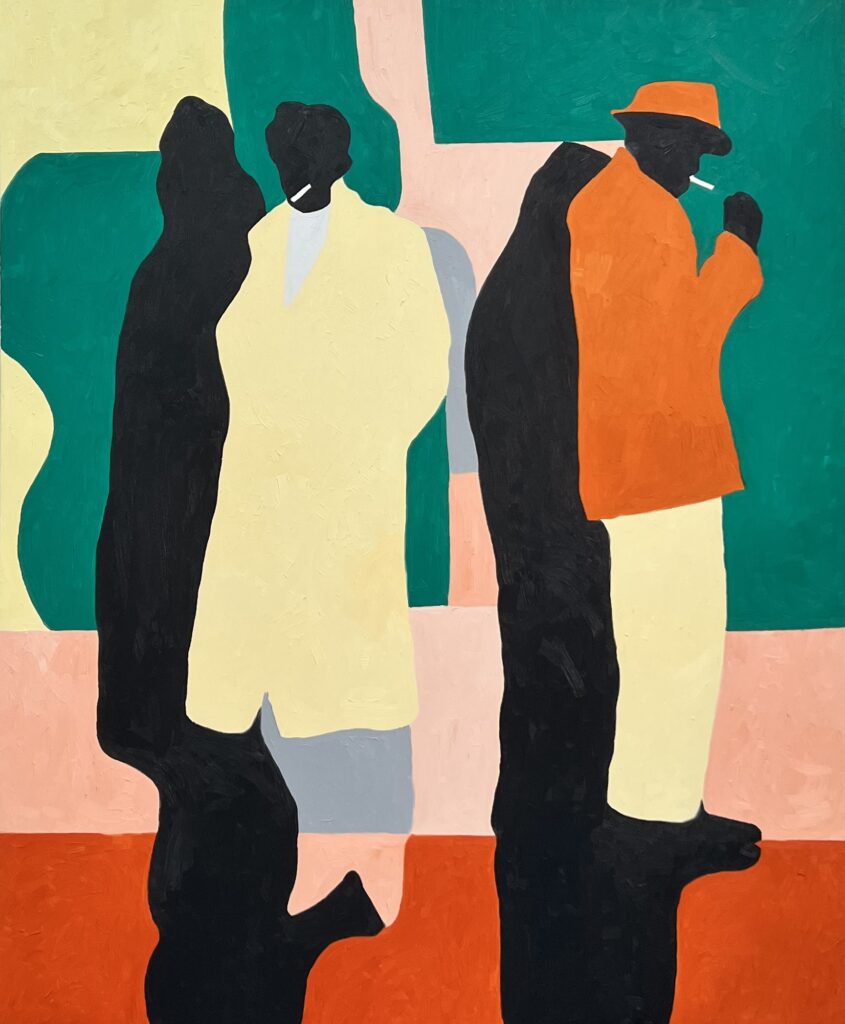
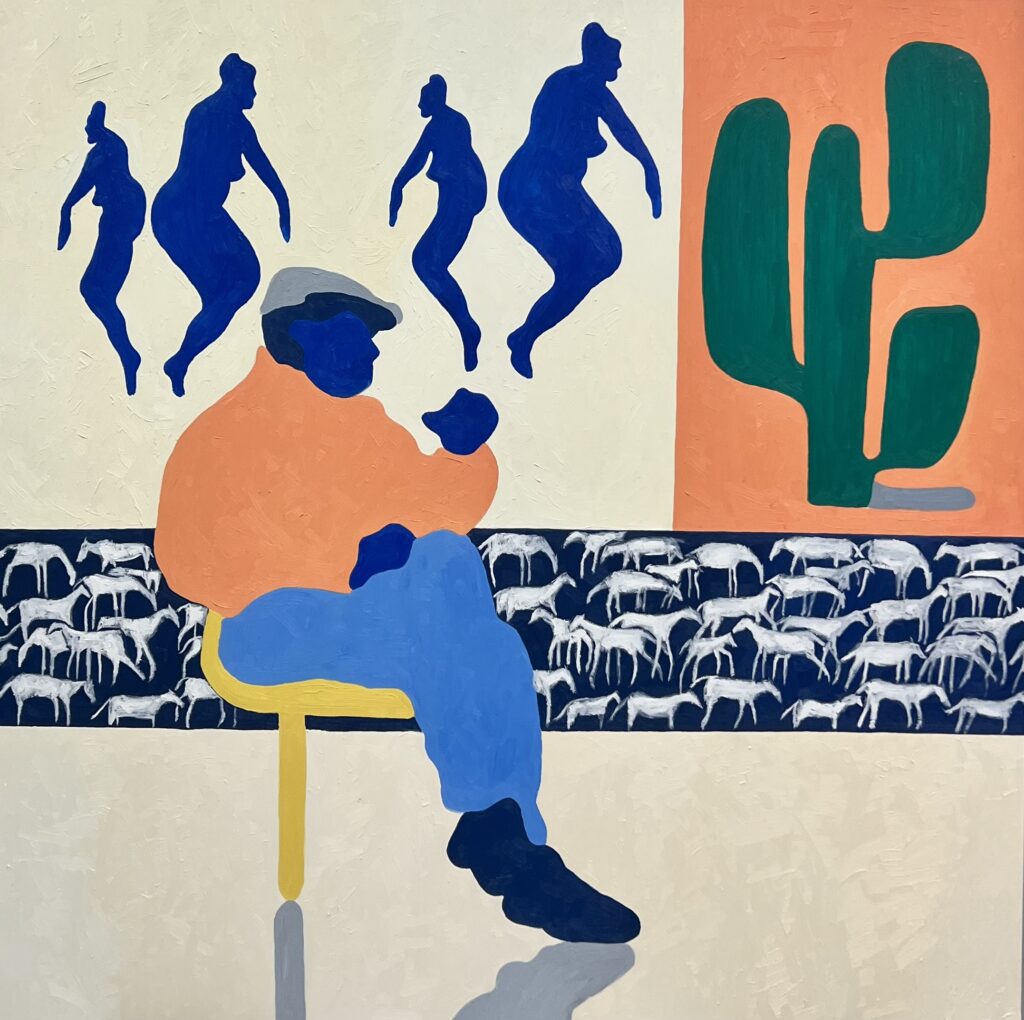
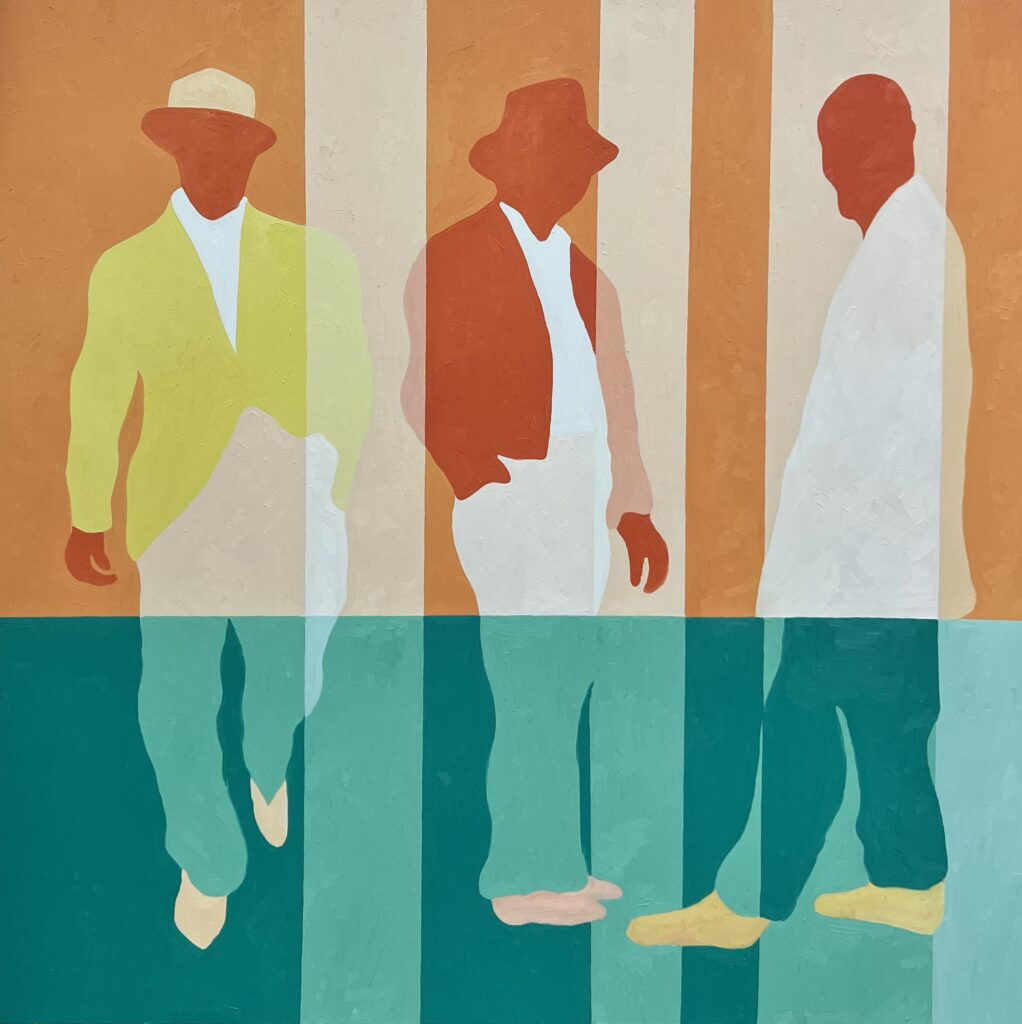
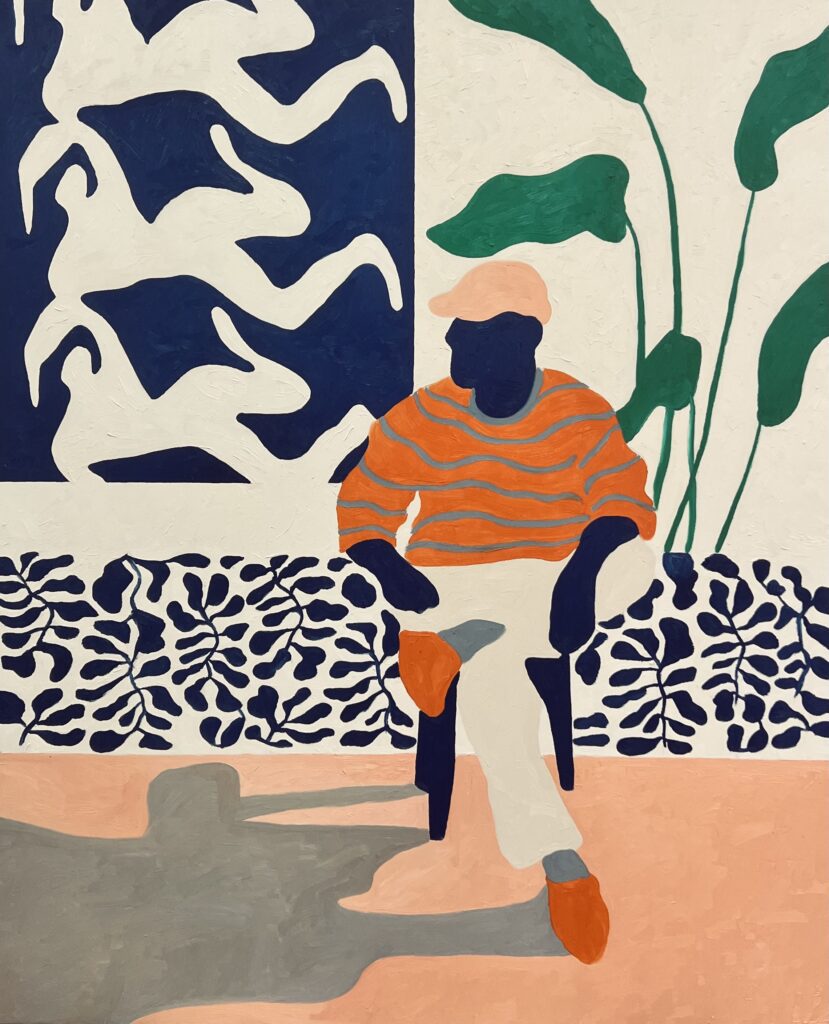
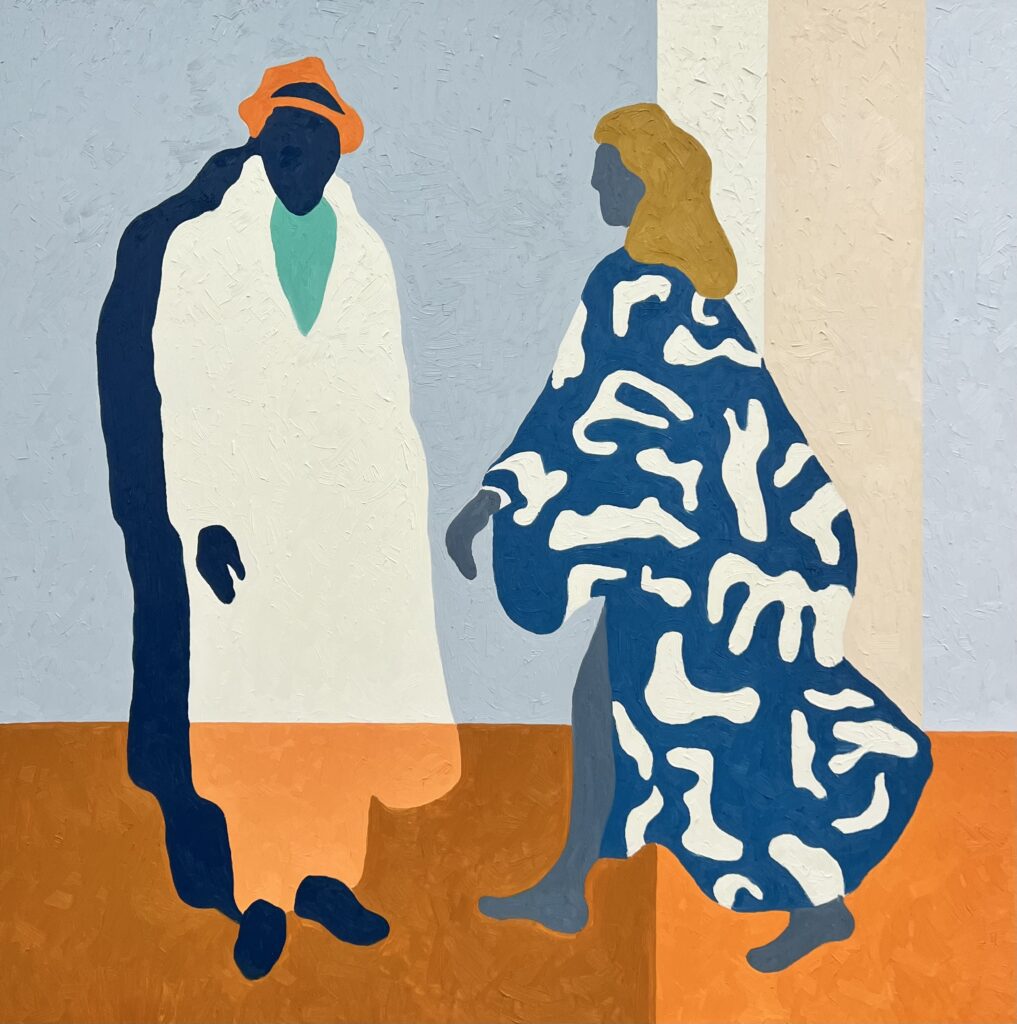
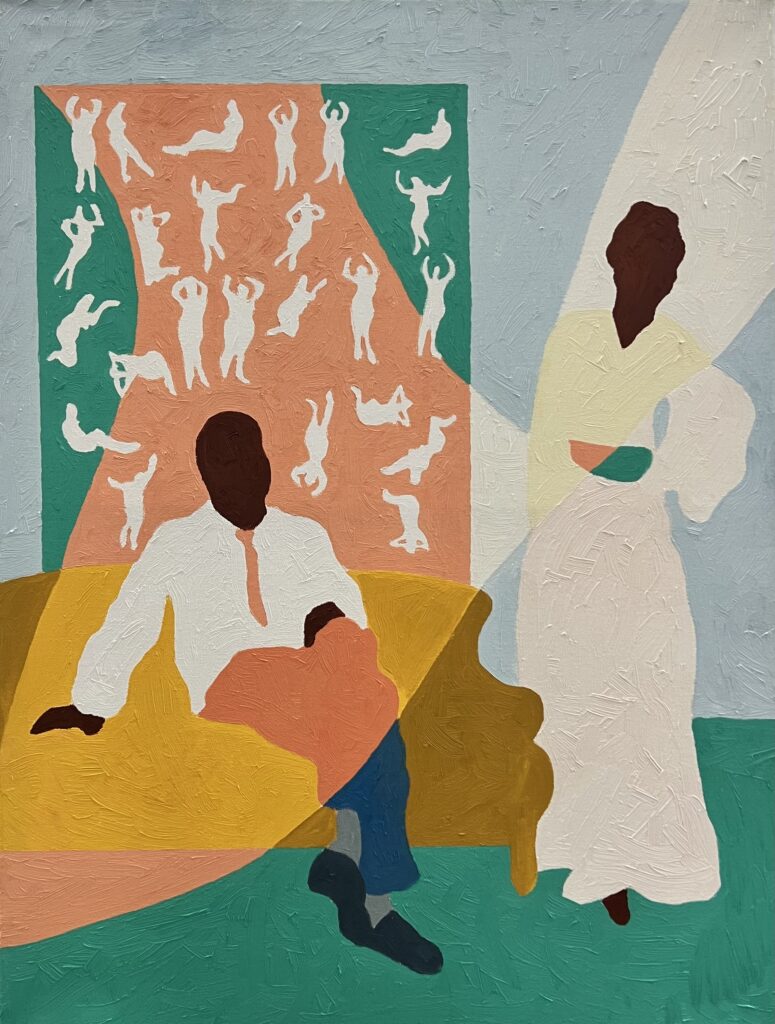
“So my sister, who had joined the Peace Corps, said, do it! There won’t ever be a better time. So I signed up. You don’t get to choose where you go, but as luck would have it, I was sent to El Salvador.”
It was to be a life-changing experience. After a year in El Salvador, Samuel met Maria, now his wife. Maria was born in Uruguay but had also lived in El Salvador, Guatemala, Brazil and Italy – she is fluent in Italian.
By now, Samuel was 28, and married.
An artist is born
So how did he achieve the next big reinvention of himself as artist?
“Well, I’d always been fascinated by painting and artists,” says Samuel. “I liked art but was not trained or especially good at it. But it wasn’t on the radar. After I came back from the Peace Corps, I got another degree in teaching History in New York. The plan was to teach in international schools, and Maria had a background in teaching Philosophy.
“We got a job teaching at a high school in San Pedro Sula in Honduras, the second largest city in Honduras” – here, Maria interjects to say, “the murder capital of the world”.
Samuel explains a weird dichotomy whereby they have a dreadful gang problem but that the Hondurans are the nicest people you could hope to meet.
‘Several of my students would report that a parent had been killed, it was so in your face on a day-to-day basis,” says Samuel. “It was a crazy place, and because it was so dangerous, the hard part was finding things to do. You could go to a mall and there were a couple of bars near where we lived but there were not really any public parks and you certainly couldn’t walk along the streets, especially after dark.’
So they spent their time watching Netflix and staying in, safe. ‘But the school had rented us a big house and we had a couple of spare rooms. Maria went to a local hardware shop and picked up some supplies, like paint. So to get out of the rut, I decided to start painting, hanging canvases on the walls.
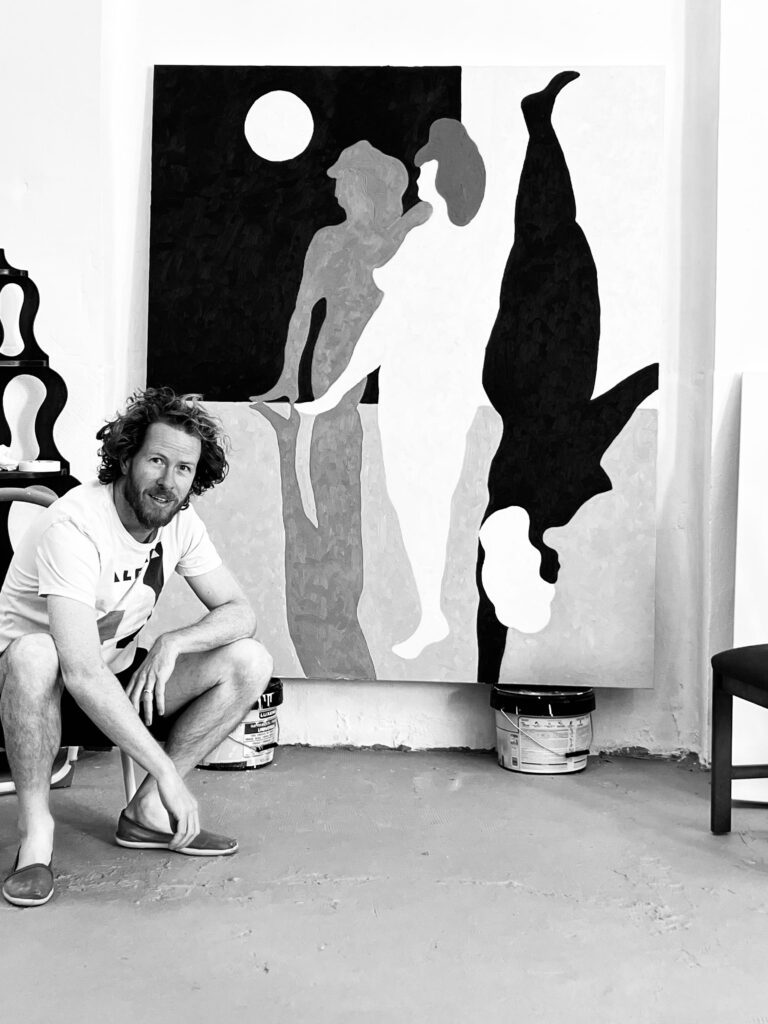
‘I’d always loved art but I was never the best at it and I had let it go by the wayside, I didn’t take any further courses but I really took to it. After three paintings, I said to Maria, ‘I’m going to be an artist for the rest of my life.
‘Previously, I had taken instruction from the art teacher about what to paint. This was my first experience of independent creativity. It was overwhelming at first, but quickly I really got into the complete freedom that I had.
‘By December 2014, we decided to move back to Denver to teach history at high school but I carried on painting. We did a placement at a local French restaurant where we exhibited art, they gave us a show, me and Maria, alongside dinner and jazz.’
Maria has also been a lifelong artist but says now she devotes her time to supporting Samuel’s work, but still paints when she feels either very high or very low. ‘It’s more emotional for me than work.’
Making a living from art
‘I invited a bunch of friends to the restaurant to see my show. I managed to sell a few pieces, which encouraged me in the belief I could make a living from art. One of my friends was up in Aspen and couldn’t make it so I sent him pictures of my art,’ says Samuel.
‘A couple of weeks later he called me and said, ‘Samuel, my stepmother is about to open a little art gallery in Aspen and I showed her your paintings. She fell in love with them and said she wanted to buy every piece in the show. So we put a red sticker on everything and after the show, drove up to Aspen with all the art she had bought.’
Maria interjects to say, ‘It was insane and intense, we couldn’t have dreamed of such a break!’
‘The buzz of selling all my work was incredible, a real boost. One of those magical moments that changed my life,’ says Samuel.
A word about style
‘I’ve always been a figurative artist,’ says Samuel, ‘and I like to portray people and create moods, movement and a feeling in doing so through the human figure.’
If you look back at his older paintings, says Samuel, the subjects are more realistic, inspired by farmers and ordinary people in Salvador and elsewhere. These days, he says, he has a more figurative style, seen in the paintings in the gallery above.
He is very influenced by the Latin world and Central America, and is inspired by history. ‘There is a Portuguese word used in Brazil, saudade. It’s a longing, a nostalgia for a place you have never been or ever lived. That lies at the heart of my work,’ explains Samuel. ‘I was always in love with the writers of the early 20th century, such as Hemingway, F Scott Fitzgerald, Picasso, and pre-Castro Cuba. That jazz spirit of the 1920s is something I think you can see in my work.’
Samuel started teaching art for a number of years, up until 2021 when they felt they needed something more. They took the decision to change their lives and carry on with their adventure. They decided upon Valencia.
He has a very loyal following. Not only with the gallery in Aspen but also a number of US private collectors. They keep buying his work and have even come over to Valencia to visit the workshop and see his latest pieces.
They’ve now been in Valencia 18 months, and he feels it is his spiritual homecoming. ‘I always felt drawn to Europe through literature and art. With my experiences in Latin and central America, Spain was the obvious choice,’ says Samuel.
It happened that Maria’s parents moved from Chile to Valencia. After visiting them a few times, they fell in love with the city. After two years of lockdown and pandemic, predictability had become tiresome, and they wanted a new challenge.
I have to declare an interest in that I met Samuel and Maria on their first visit to Valencia. It has been a pleasure to see them developing their lives and sharing in their successes.
Recently, Samuel found a studio that he now leases. It’s in Monteolivete, an up-and-coming art neighbourhood, just across Peris i Valero from trendy Ruzafa. It’s actually next door to the Bloom Gallery, admirably run by Elizabeth and Bob Khoury.
As a side note, the Bloom Gallery champions local artists. Co-founder Elizabeth has told me that her dream is for Carrer de Lluís Oliag, to become an artistic hub. Her gallery champions local artists including Sandi Goodwin and others, with exhibitions, events and drinks parties. So Samuel could not have picked a better spot for his space.
Taking off to great success
‘My influences date from around the end of impressionism, into fauvism, cubism and surrealism, and the onset of modernism. I take a little bit from each, and big influences include Matisse, Derain and Picasso. My big thing is colour. I love the vibrancy and celebration of colour. I think that is one of the big factors in my work,’ says Samuel. Samuel now strives to paint five days a week. His work is on show at the Cha Cha Gallery in Aspen, Colorado. He is also on show at the Neutro Gallery in Palma de Mallorca. And recently the owner of the Cricket Gallery on the Kings Road in trendy Chelsea invited him to London. He is now proud to be exhibited there.
This summer, he will have a show at the Fat City Gallery in Aspen, Colorado. Owner DJ Watkins has a solid track record in exhibiting work by Ralph Steadman and Hunter S Thompson. He recently came to Valencia to see Samuel’s work firsthand.
Says Samuel, ‘I guess he must have liked it because he has given me an exhibition.’
‘I have had a blessed journey,’ says Samuel. ‘First with being taken on by the Cha Cha Gallery and now Neutro and The Cricket Gallery. And, of course, my loyal private collectors. It allows me to carry on doing the thing I love.’
It puts one in mind of the Mark Twain quote. ‘Find a job you enjoy doing, and you will never have to work a day in your life’…
- To find out more, visit https://www.samueluelprudden.com; on Instagram as @samuelprudden

